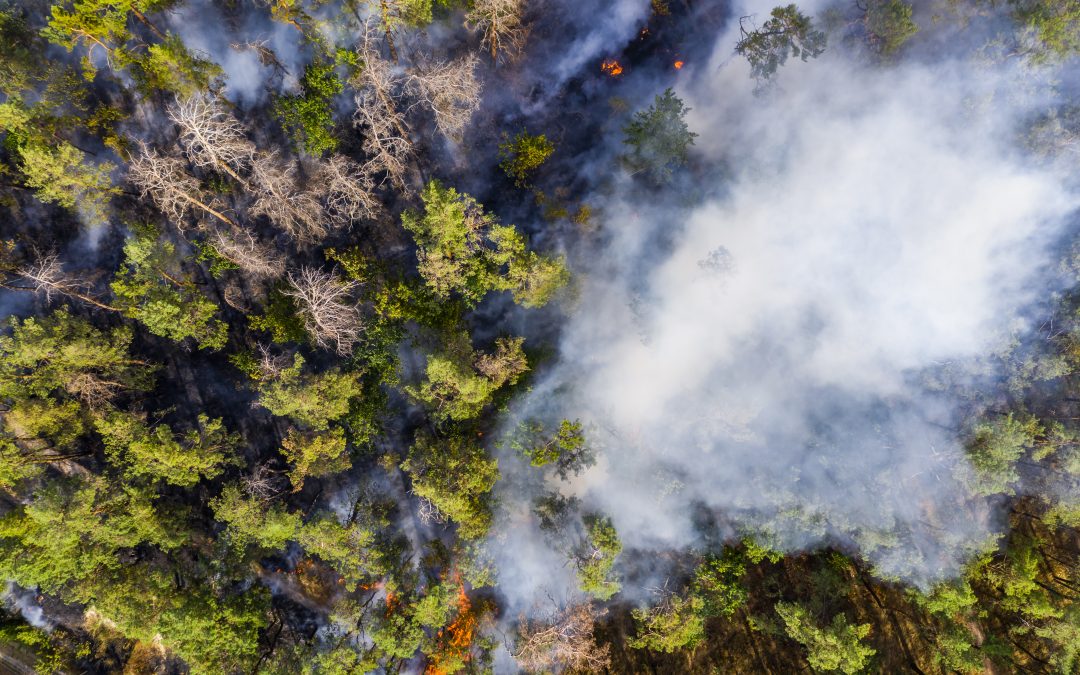In recent years, the devastating effects of climate change have become increasingly apparent. Wildfires, hurricanes, heatwaves, and other extreme weather events are occurring with greater frequency and intensity across the globe. The link between these disasters and climate change is well-established, and the urgency to take action has never been more critical. Among the most effective responses is the shift towards renewable energy sources, such as solar power, which can help mitigate the climate crisis and reduce the occurrence of extreme weather events.
Understanding the Connection Between Climate Change and Extreme Weather
As the Earth’s average temperature rises, driven largely by greenhouse gas emissions from human activities, the natural balance of weather patterns is disrupted. This disruption leads to more extreme and unpredictable weather, including intense storms, prolonged droughts, and record-breaking temperatures.
Here’s how climate change influences some of these phenomena:
- Wildfires: Rising global temperatures are causing longer and more intense heatwaves, drying out forests and vegetation. This creates tinderbox conditions, making areas more prone to ignition and leading to larger, more frequent wildfires. Areas like California and Australia have seen unprecedented wildfires in recent years, destroying homes, ecosystems, and claiming lives.
- Hurricanes and Storms: Warmer oceans, caused by climate change, are a major factor in the increased frequency and severity of hurricanes and tropical storms. Warmer water fuels storms, making them more powerful and capable of producing more rainfall. The result is storms like Hurricane Harvey (2017) and Hurricane Dorian (2019), which caused catastrophic flooding and damage.
- Heatwaves: Heatwaves are becoming more frequent and severe as global temperatures rise. Prolonged periods of extreme heat not only exacerbate droughts but also increase energy demand, strain infrastructure, and create public health crises, especially for vulnerable populations.
- Droughts and Flooding: Climate change is also altering precipitation patterns. Some areas are experiencing prolonged droughts, reducing water availability, while others face more intense and frequent flooding due to excessive rainfall. These shifts in water patterns not only disrupt agriculture and water supplies but also contribute to other disasters like wildfires and landslides.
The Role of Renewable Energy in Reducing Extreme Weather Events
The root cause of many of these extreme weather events is the rise in greenhouse gases, particularly carbon dioxide (CO2), which trap heat in the Earth’s atmosphere. Most of these emissions come from burning fossil fuels—coal, oil, and natural gas—for energy. Transitioning away from fossil fuels to renewable energy is essential in curbing the progression of climate change and reducing the severity of extreme weather events.
Renewable energy sources, like solar and wind, generate electricity without emitting greenhouse gases. This means that increasing our reliance on renewable energy directly reduces the amount of CO2 and other harmful emissions in the atmosphere.
Here’s how renewable energy, particularly solar power, plays a critical role in addressing climate change and mitigating extreme weather:
- Lowering Greenhouse Gas Emissions: Solar energy provides a clean, sustainable source of electricity. By replacing fossil fuel-based power generation, solar reduces carbon emissions and helps slow the pace of global warming, which is a driving force behind extreme weather events. The more we invest in solar power, the fewer emissions we generate, reducing the intensity of future climate impacts.
- Energy Independence: Solar power allows homes and businesses to generate their own electricity, reducing dependence on fossil fuels. This is particularly important in regions that are vulnerable to energy shortages during extreme weather events like hurricanes or heatwaves. With solar panels and battery storage, individuals can maintain energy security even in the face of power outages.
- Reducing Heat Island Effect: Urban areas, with their dense construction and limited vegetation, tend to absorb and retain more heat, contributing to what’s known as the “urban heat island effect.” Solar panels on rooftops help reduce this effect by absorbing sunlight and converting it into usable energy, lowering overall temperatures in cities and lessening the impact of heatwaves.
- Decentralized Power: Renewable energy infrastructure, such as rooftop solar, is decentralized compared to traditional power grids. This means that during extreme weather events like hurricanes or wildfires, which can damage large power stations, solar-powered homes and communities are more resilient and can continue to generate electricity independently.
What We Can Do: Embracing Renewable Energy for a Safer Future
Addressing the link between climate change and extreme weather requires a shift in how we produce and consume energy. By embracing renewable energy sources, particularly solar power, individuals, businesses, and governments can contribute to reducing greenhouse gas emissions and slowing the progression of climate change.
Here are a few actions that can make a difference:
- Invest in Solar Energy: Whether you’re a homeowner, a business owner, or part of a community organization, installing solar panels is a practical and impactful step toward reducing your carbon footprint. Solar energy not only helps mitigate climate change but also provides long-term savings on energy costs.
- Support Renewable Energy Policies: Advocate for local, state, and federal policies that promote renewable energy adoption, such as tax incentives, rebates, and mandates for clean energy usage. Supporting policies that invest in renewable energy infrastructure can accelerate the transition away from fossil fuels.
- Educate and Advocate: Raising awareness about the link between climate change and extreme weather is essential. Share information about renewable energy solutions with your network, and advocate for climate action in your community.
The connection between climate change and extreme weather events like wildfires, hurricanes, and heatwaves is undeniable. However, by embracing renewable energy solutions like solar power, we can reduce the greenhouse gas emissions that drive these disasters and build a more resilient, sustainable future. The time to act is now—switching to renewable energy not only protects the planet but also shields our homes, communities, and future generations from the worst impacts of climate change.


Recent Comments